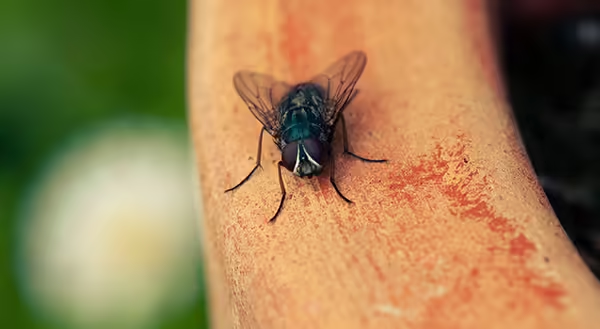
The wet spring has certainly provided favorable breeding conditions for flies. As we progress into the summer it is evident that fly pressure is and will be heavy.
Although all flies do pose risk of irritation and thus lost dollars to beef producers, it is important to know there are four main types of flies that bother cattle: Stable fly, Horn fly, Face fly, and Horse fly.
- Stable fly: This fly is found on the feet and legs of the animal. Naturally, irritation in this area causes cattle to stomp their feet and switch their tail. Stomping feet and switching the tail are actions that require energy and thus increase the maintenance requirement of the animal. Thus, an economic threshold has been studied and concluded that > 5 stable flies per leg would be a drain on performance and potential profit
- Horn fly: This fly is found on the shoulders, back, and belly of the animal. These flies are the main culprit of lost performance as they utilize the host animal for 20-30 blood meals per day. Any more than 200 flies per animal will result in lost performance. These flies lay eggs in the manure, thus feed thru fly control is an effective prevention method.
- Face fly: This fly obviously is found on the face around the eyes, mouth, and muzzle. It is smaller in size than the Stable or Horn fly. These flies mostly feed on secretions from the eye. The main concern with face flies is that they are the main vector for Pinkeye. These flies also reproduce in the manure.
- Horse fly: This fly is notorious for biting and feeding on blood meals. It is substantially larger in size than the other types of flies. It is potentially a vector for any blood transferable disease. There is some worry that Horse flies are contributing to the spread of Anaplasmosis.
Research has tagged over $800 Million dollars of lost revenue annually due to flies. These losses are mostly in reduced performance, lower ADG, Pinkeye, and lower milk production.
There are several control methods: Fly tags, pour-ons, dust bags, oilers, knockdown sprays, feed additives, baits, and more.
- Fly tags are a popular choice, however it is important that you diligently rotate active ingredients or types of insecticide to ensure resistance is not easily built up to a certain fly tag. It is also important to remove all old tags immediately after the season. Most fly tags provide good coverage for only 30-60 days. Thus, fly tags should be one part of your fly control plan… not the entire plan.
- Oilers and dustbags are best in forced use scenarios. This means the cattle are required to go under them in a gateway, around a mineral feeder, or any high use area. Success is dependent on keeping these "charged" or containing the insecticide. They are a great low labor tool to re-apply fly control.
- Sprays are effective in immediately decreasing fly loads on animals. They however do not provide much residual control and thus must be re-applied frequently. This adds labor and sometimes stress to the animal. Some sprays do have residual, but only for 1 to 2 weeks. Remember wear protective clothing, eye protection, and do not spray near feed and water.
- Biological fly control is growing in popularity. Fly parasites are used to control unhatched flies. These parasites attack fly pupa preventing flies from hatching. The parasitic wasp has a lifespan of 18-21 days and should be distributed throughout the fly breeding season.
- Lastly, feed additives like IGR can be fed through mineral or tubs. This prevention method is great at breaking the life-cycle of the fly. This is perceived as a more costly method of fly control. It cannot kill your neighbor's flies. You need to start feeding IGR at least two weeks prior to fly season. This method is very low labor and very low stress on the animals.
Fly control is important to helping ensure performance is not hampered and that your herd stays healthy and disease free. Consult with your veterinarian or Extension specialist on a fly control plan and keep good records of previous years to maintain effective control within your herd.